These 4 DIY Tanning Oil Recipes are each based on a different natural oil. I provide the SPF for each oil so you can plan your golden tan with enough protection for your skin type.
Every summer, I look forward to spending time under the sun to get a natural tan.
I know you also love giving your skin that sexy, beach-babe complexion that Coco Chanel first introduced in the 1920s.
However, this trend has its fair share of consequences such as sunburn—worse, even skin cancer.
This is why I recommend you use tanning oils made from all-natural ingredients that contain SPF and can help speed up the tanning process.
Benefits Of Homemade Tanning Oils

With a lot of sunscreen and tanning products popping up like mushrooms these days, it gets a little harder to know which ones actually work.
Fortunately, you have the option to go DIY by making a homemade tanning oil.
I know you might not be sold on this idea yet, but I’ll start you out with 5 reasons why you can benefit from swapping your old tanning lotion for a DIY tanning oil.
1) Homemade Tanning Oils Are Healthier Compared To Commercially-Sold Tanning Products
From petroleum, paraben, and BHT, to artificial coloring, fragrance, and formaldehyde, it is clear that your skin is headed for a disaster when using chemically-prepared tanning products.
These artificial enhancers and preservatives have been noted by dermatologists to be harmful to your skin.
Instead of sacrificing your health in exchange for a highly-coveted summer tan, you can choose to do your own tanning oil that is filled with natural goodness and dermal benefits.
Among the things that DIY tanning oils can do include moisturization, sun protection, safe and improved sunlight absorption, and supplementation of Vitamin E.
Later in this post, I’ll share with you a few recipes I’ve discovered using fewer (and healthier!) ingredients that not only provide ample SPF but also help you keep a healthy bronzed skin.
2) Homemade Tanning Oils Use Readily-Available Ingredients
All you’ll ever do is raid your pantry and search for the oil variants which you commonly use for cooking.
While some oils are not popular at home, you can still avail them through your local supermarket and even pharmacy.
This makes the process easier as you won’t look all over to source your DIY tanning oil ingredients.
3) DIY Tanning Oils Are Highly Effective
Unlike lotions that you smother on your skin, a natural, homemade tanning oil can do well even on its own and without unnecessary ingredients that are thought to “improve” absorption and texture on skin.
In fact, the luster of these natural oils on skin attracts a sufficient amount of sunlight to speed up the tanning process, hence reducing your time spent under the glaring sun.
If you’re as concerned with bronzing effect as you are with sun protection, your best bet is to use homemade tanning oils.
4) DIY Tanning Oils Are More Affordable Than Store-Bought Products
Obviously, any DIY projects and recipes involve a little to no amount at all.
If you already have these natural oils at home, you can save a few dollars that could be spent on buying them at the supermarket.
You’ll definitely agree with me that most tanning oils in the market are priced ridiculously high, so it’s best if you can simply make your own—even in batches.
{READ THIS: 7 DIY Self Tanner Recipes: Instant Natural Glowing Fake Tan}
What Can Be Used As A Tanning Oil?
You can use natural oils extracted from plants and seeds as main ingredients for making a DIY tanning oil. Aside from being organic and easier to source, these oils can work together in harmony to provide you with highly-effective tanning oil that not just provides sun protection, but also helps in achieving faster results in less time. Plus, they’re safe to use and even help promote better skin health with additional healing qualities.
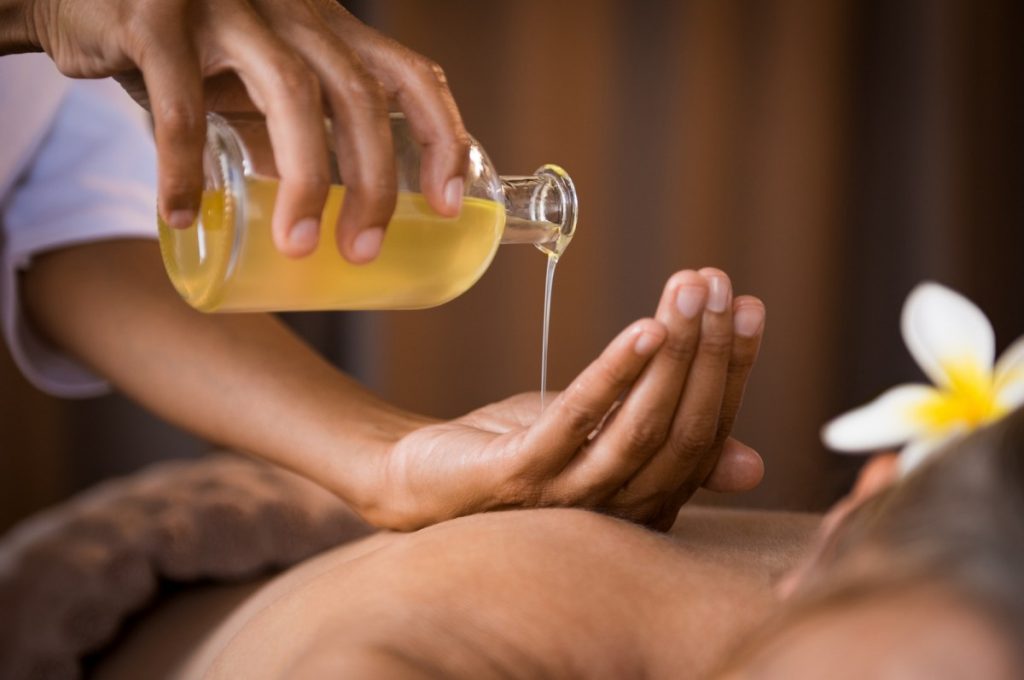
4 Best DIY Tanning Oil Recipes With SPF

To give you an idea of how a DIY tanning oil lives up to its promise, I’ve rounded up 4 of the most popular natural oils that are often used for achieving a safe tan.
1) Coconut Oil For Tanning
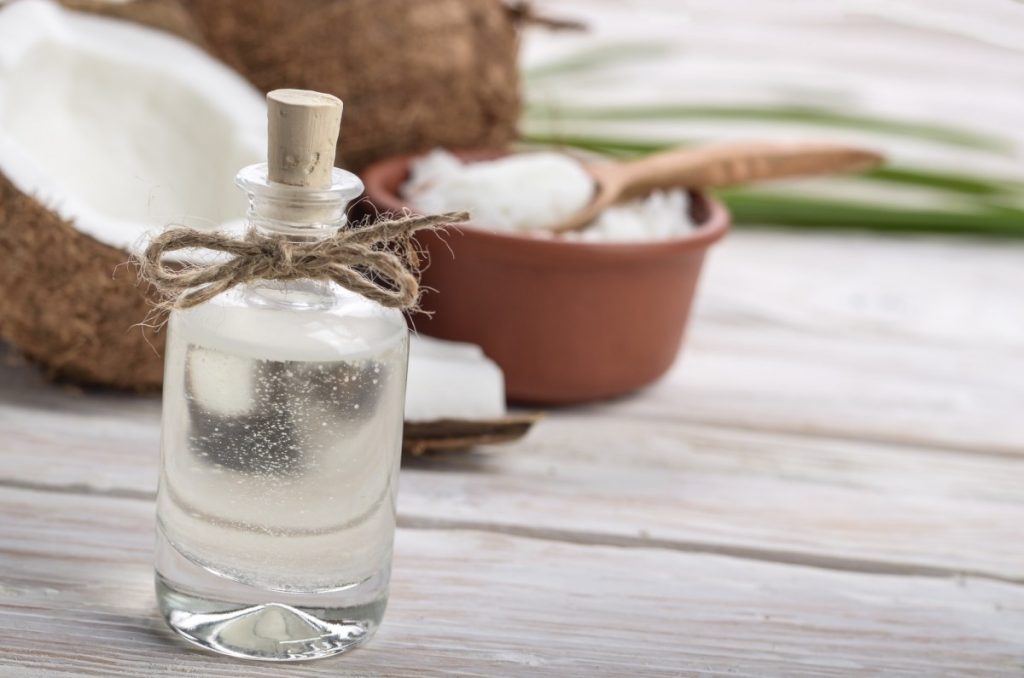
This oil is commonly used as a base ingredient in commercial tanning oils and even lotions.
Benefits Of Coconut Oil For Tanning
Coconut oil naturally contains fatty acids, which, when applied on the skin, can create a barrier against sunburns caused by excessive exposure to UV rays.
With its SPF range of about 4-5, coconut oil provides just the right amount of sun protection while also helping you achieve a better tan by lowering the refractive index, which draws more sunlight that penetrates the skin.
Aside from these benefits, coconut oil is also known as a moisturizer that restores hydration on the skin and retains its elasticity.
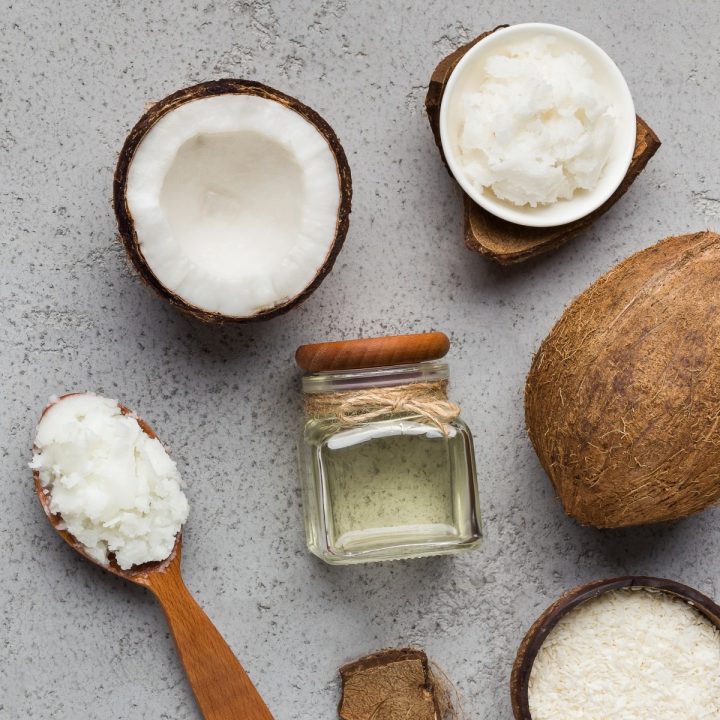
Coconut Oil For Tanning Recipe
Apply this DIY tanning oil to neutralize UV radiation on your skin and give it an antioxidant boost. This oil is recommended for you if you have sensitive or already brown-skinned since people with dark complexion best suit tanning oils having lower SPF.
Instructions
- Combine a cup of coconut oil and 8 tablespoons of walnut oil in a deep bowl.
- Mix thoroughly and add 2 cups of brewed green tea slowly into the mixture.
- Apply this DIY tanning oil to neutralize UV radiation on your skin and give it an antioxidant boost.
SPF Rating Of Coconut Oil
Coconut oil has an SPF rating of 4-5, which is lower compared to the recommended sunscreen score.
However, since it is used to create a tan, its SPF level is enough for its kind.
I’d recommend this oil for you if you have sensitive or already brown-skinned since people with dark complexion best suit tanning oils having lower SPF.
2) Avocado Oil
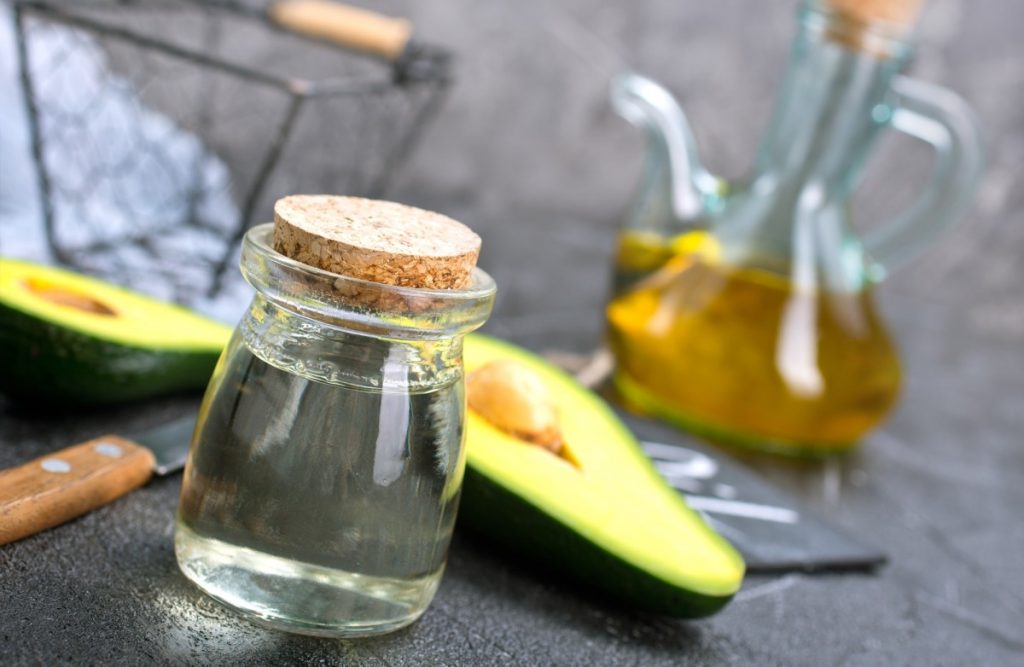
This oil is known for its high amounts of Vitamin E and fatty acids, which ensure the suppleness of the skin.
Benefits Of Avocado Oil For Tanning
Avocado oil in itself is full of vitamins that help soothe damaged skin layers and repair its tissues for a safe sunbathing.
Often used in combination with other natural oils, avocado oil is generally effective in attracting sun rays necessary for speedy tanning.
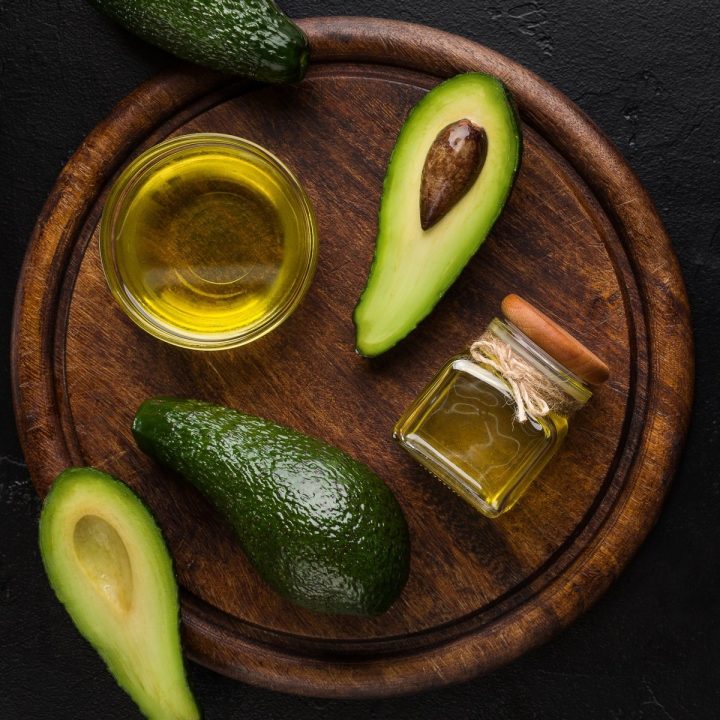
Avocado Oil For Tanning Recipe
This is recommended if you have a pale complexion since it will protect your skin from sunburn as lighter skin used to get easily damaged by UV rays.
Instructions
- Pour a ¼ cup of coconut oil into a bowl and mix with 2 tablespoons of avocado oil.
- Add 1 tablespoon of carrot seed oil to create a tanning oil that also protects the skin from wrinkles caused by excessive sun exposure.
- Transfer the mixture into a bottle using a funnel.
SPF Rating Of Avocado Oil
Avocado oil’s SPF 15 rating makes it ideal for people with dry skin.
It is higher than most natural oils in terms of sunscreen ability.
I’d also recommend this to you if you have a pale complexion since it will protect your skin from sunburn as lighter skin will get easily damaged by UV rays.
3) Olive Oil
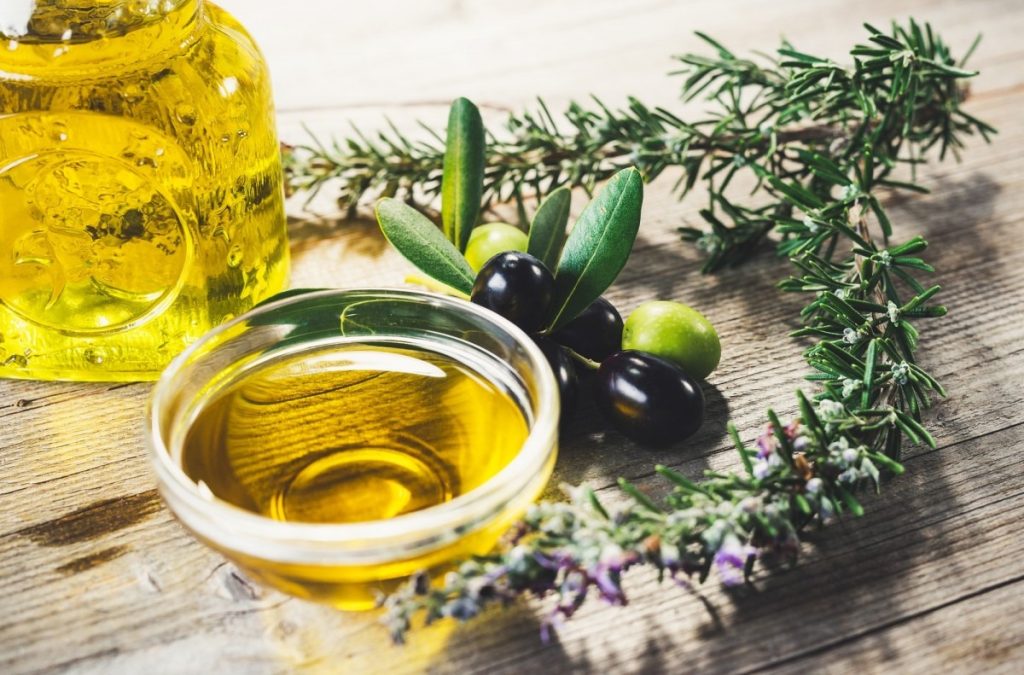
This pantry staple is also a popular tanner in itself, giving off a deeper tan in just a few minutes.
Benefits Of Olive Oil For Tanning
Olive oil is known as a “tan accelerator” for its natural bronzing effect on the skin, as well as its ability to keep the skin moisturized despite hours of staying under the sun.
Such quality makes it an ideal quick-fix for achieving a darker tan without extending your sunbathing time.
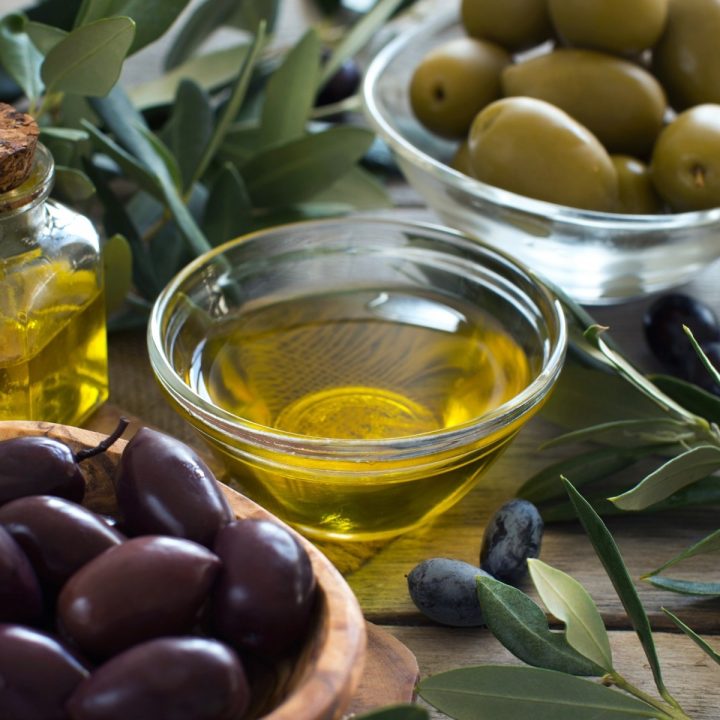
Olive Oil For Tanning Recipe
This is recommended for people who have dark skin as the tanning effect is visible and easier without running into risks of sunburns.
Materials
Instructions
- Combine 1 cup of olive oil with 8 tablespoons of avocado oil.
- Add 2 tablespoons of mixed raspberry seed oil and carrot seed oil.
- You may also add sandalwood essential oil into the mixture to give it a natural scent.
SPF Rating Of Olive Oil
Olive oil ranks midrange with its SPF 8 rating, which is ideal if you’re aiming to get a deeper tan.
I’d recommend this for people who have dark skin as the tanning effect is visible and easier without running into risks of sunburns.
4) Sesame Oil
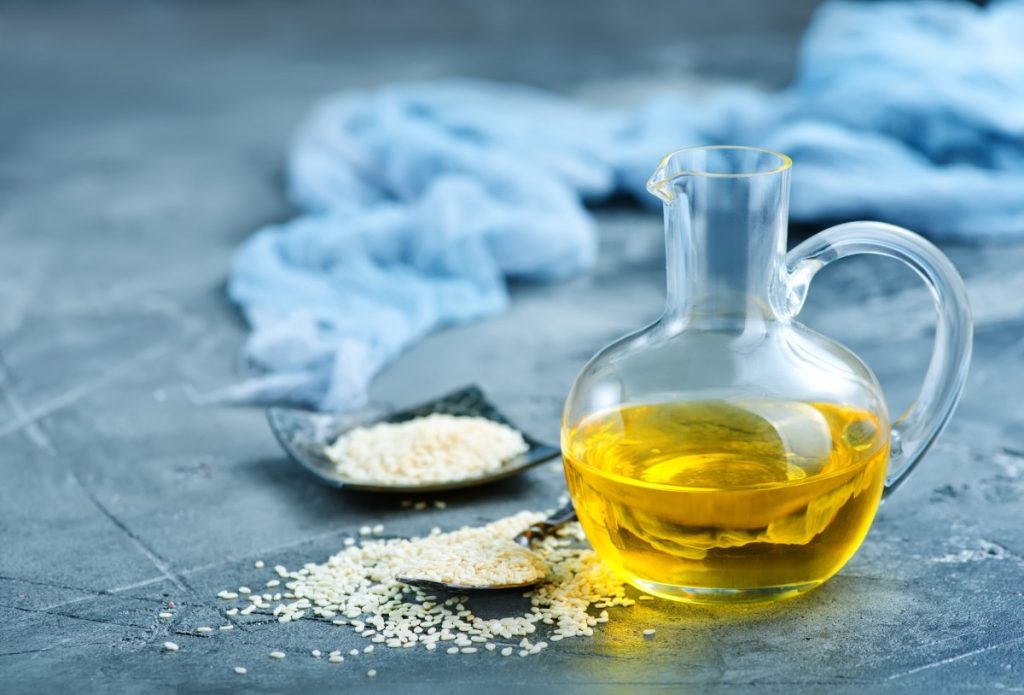
This oil has a high SPF rating and is also loaded with Vitamin E, an essential skin vitamin.
Benefits Of Sesame Oil For Tanning
Thanks to its high Vitamin E content, sesame oil is effective not only in giving you a tan, but also helps maintain the skin’s elasticity despite prolonged sun exposure.
Aside from this skin vitamin, sesame oil also contains antioxidants which the dermis absorbs to free the skin up of oxidative stress and toxins from deep within.
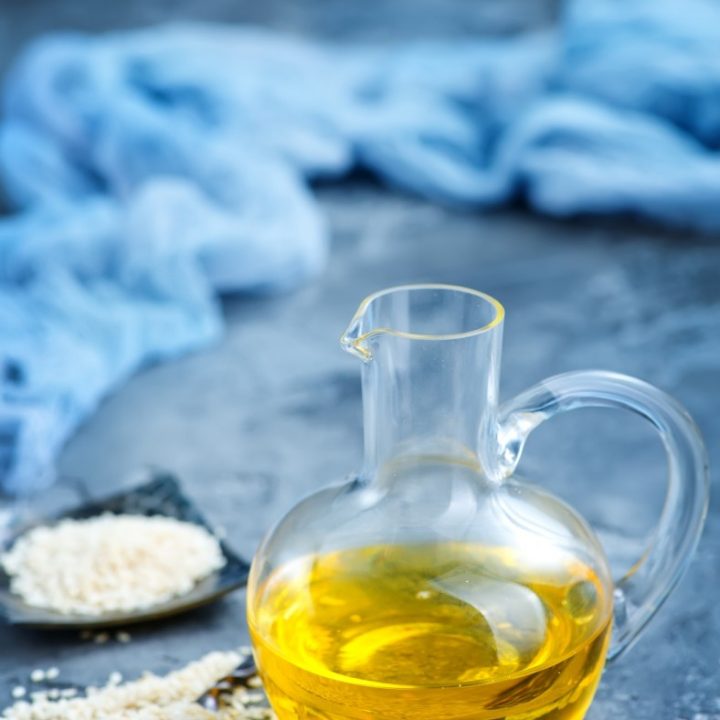
Sesame Oil For Tanning Recipe
Use this recipe for making a tanning oil that is ideal even for dry skin.
Materials
Instructions
- Stir 8 tablespoons each of sesame oil, avocado oil and walnut oil in a deep bowl.
- For a natural fragrance, you may opt to add a drop of mint essential oil before transferring the mixture into a bottle.
- Use this recipe for making a tanning oil that is ideal even for dry skin.
SPF Rating Of Sesame Oil
Sesame oil has an SPF rating of 4, which is ideal for tanning in already dark-skinned sunbathers.
It is a little lower than most sunscreen-type oils, but still allows sufficient tanning process on skin, resulting in a deeper bronze.
Best DIY Tanning Oil For Pale Skin

If you have pale skin, you should use olive oil and avocado oil for making a DIY tanning oil.
Lighter complexion gets easily burned by sun rays in a matter of minutes, and we’re not gonna risk getting sunburns so quickly.
With these oils’ high SPF ratings, you can achieve a tan in a safer way minus the pain.
Best DIY Tanning Oil For Dark Skin

If you’re dark-skinned, I suggest that you try making a tanning oil made of combined sesame and coconut oils.
Their low SPF ratings can benefit your tanning process while still ensuring that you’re protected from excessive UV radiation.
Apparently, people who are already tanned or having brown complexion are safer under the sun than fair-skinned individuals who seem to have developed oversensitivity to sun exposure.
Best DIY Tanning Oil For Dry Skin

If you want to flaunt a nice tan despite your dry skin, I recommend using a DIY tanning oil made of ingredients having high amounts of Vitamin E and fatty acids such as avocado oil to breathe life back to your skin.
You can find my favorite brands of the tanning oil ingredients I mention in this post here.
The History Of Tanning
Conclusion
Tanning is a double-edged sword: it may give you a sunkissed glow or it may harm your skin more.
But thanks to natural tanning oils, you can bask in the sun without fear of harmful chemicals or sunburns, and with confidence that you can achieve a better-looking tan.
The Best DIY Tanning Oils I recommend are the following:
- Coconut Oil
- Avocado Oil
- Olive Oil
- Sesame Oil
I hope that this post enlightened you about the basics of making a DIY tanning oil and determining which of the natural ingredients best suits your skin needs.
Free Essential Oils 14 Day E-Course
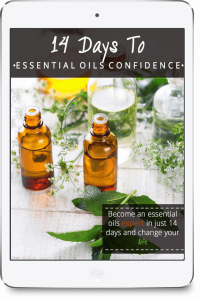
If you'd like to know more about how to use essential oils, I love this FREE e-course that walks you through the process step by step.
Click here to get your FREE 14 Day Essential Oils E-Course.
More Related Posts You Will Love
- 7 DIY Self Tanner Recipes: Instant Natural Glowing Fake Tan
- How To Have The Best At Home Spa Day: 25 Genius Ideas
- Cinnamon Cookie Scented DIY Dry Shampoo Recipe For Heavenly Hair
- Home Spa Ultimate Guide (Ideas, Recipes, Benefits, Treatments)
Click here to pin this for later
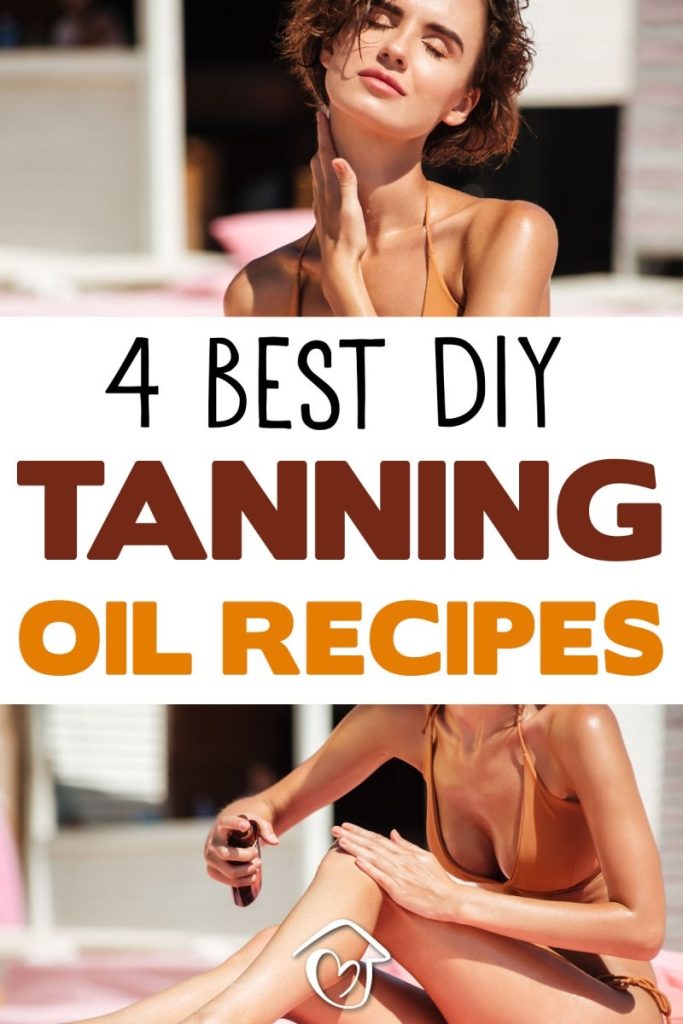
Sources
- https://www.ncbi.nlm.nih.gov/pmc/articles/PMC3263051/
- https://www.scienceupdate.com/2010/07/tanning-oil/
- https://www.health.harvard.edu/staying-healthy/the-science-of-sunscreen
- https://www.aad.org/media/stats/prevention-and-care/sunscreen-faqs
- https://health.usnews.com/wellness/articles/2016-04-18/spf-30-sunscreen-prevents-skin-cancer-by-80-percent
- https://www.ncbi.nlm.nih.gov/pmc/articles/PMC5796020/









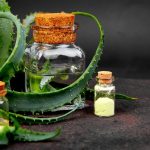
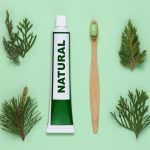


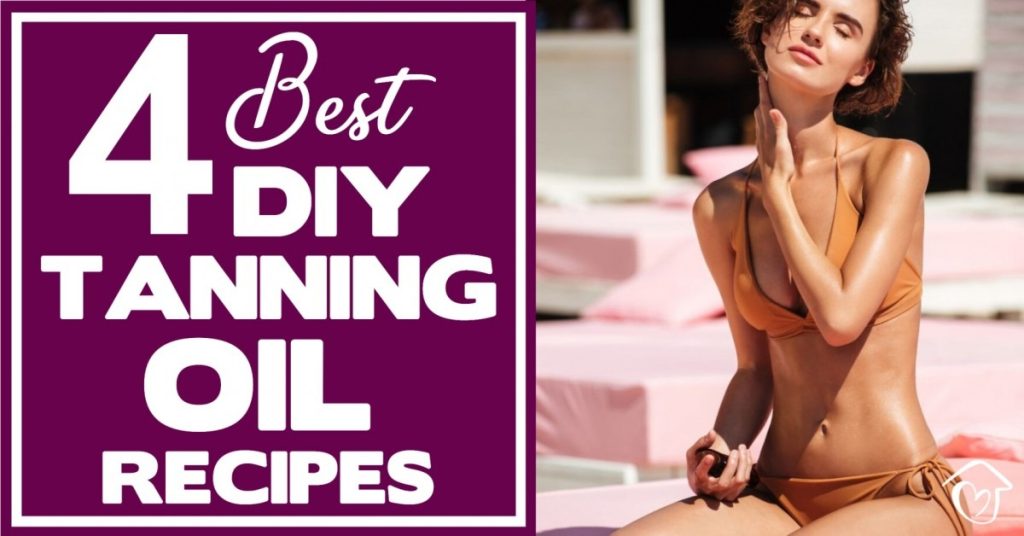




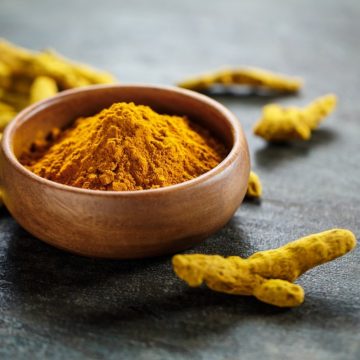
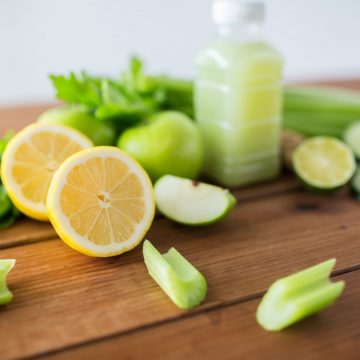
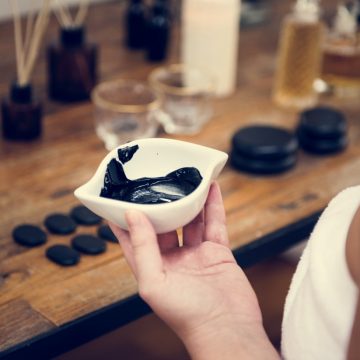

Leave a Reply